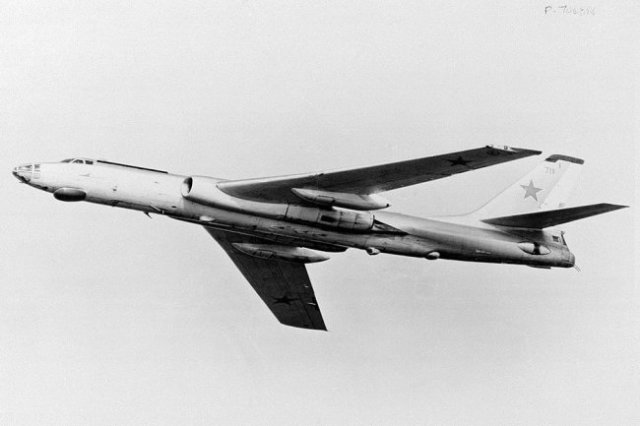On April 27, 1952, the 88-1 prototype made its first flight lasting 12 minutes. It was operated by test pilot Nikolai Rybko. With the acquisition of the Tu-16, Soviet aviation received the first mass jet carrier of nuclear weapons.
Rybko accelerated the car to 1020 km / h, which was higher than the original design speed. The range tests that followed later also gave an excellent result: the plane flew 6050 km. But in 1949, when the state task was being formed, they modestly indicated - "not less than 3000 km". In addition, long flights have shown that all systems work without failures.
Factory tests lasted until October 29, 1952, a total of 46 flights were performed. On November 13, the car was handed over to state tests at the Air Force Research Institute. Their main goal was to achieve an excessive reduction in the weight of the aircraft, removing all unnecessary. As it turned out, the copy of "88-1" is not quite suitable for the tasks: in addition to the weight, there were problems with the operation of additional equipment, as well as with the placement of small-gun weapons.
To continue the tests, a lightweight stand-in aircraft was urgently built, assigning it the index "88-2". At the same time, the issue of launching the first series of the machine was being resolved, which in July 1953 was planned to begin at aircraft factory No. 22. Chief designer Andrey Tupolev instructed his subordinates to find an opportunity to reduce the weight of the aircraft by several tons, removing the reinsurance strength parameters that were laid out beyond measure - "just in case". As a result of this struggle with weight, the car became lighter by as much as 5 tons.
Factory tests of the 88-2 model began in March 1953, and ended in September. On May 28, 1954, the aircraft was adopted by the USSR Air Force under the name Tu-16. State tests have shown that with 3 tons of bombs, the car can fly 5760 km at a maximum speed of 992 km / h and with a practical ceiling of 12800 meters. At the same time, the maximum take-off weight was 72 tons. With such parameters, the aircraft was running away from a relatively short runway - less than 2000 meters.
During 1954, the Air Force received 70 Tu-16s. Meanwhile, two more aircraft factories were connected to the production of the aircraft: Voronezh No. 64 and Kuibyshev No. 1. For the entire period of production, the Tu-16 was released in 11 modifications.
In those years, aviation developed rapidly, cars quickly became obsolete, and it is unlikely that the developers of the aircraft assumed that their creation would become a long-lived. However, the Tu-16 was operated throughout the second half of the XX century and even entered the XXI century: although it was decommissioned in Russia in 1993, it is still used in the Chinese army under the name Xian H-6.
In total, more than 1,500 of these bombers were produced. In addition, the Tu-16 became the progenitor of the first Soviet passenger turbojet Tu-104. And a little later, another passenger liner, the Tu-124, was constructed on its base.
Oleg Galitsky


